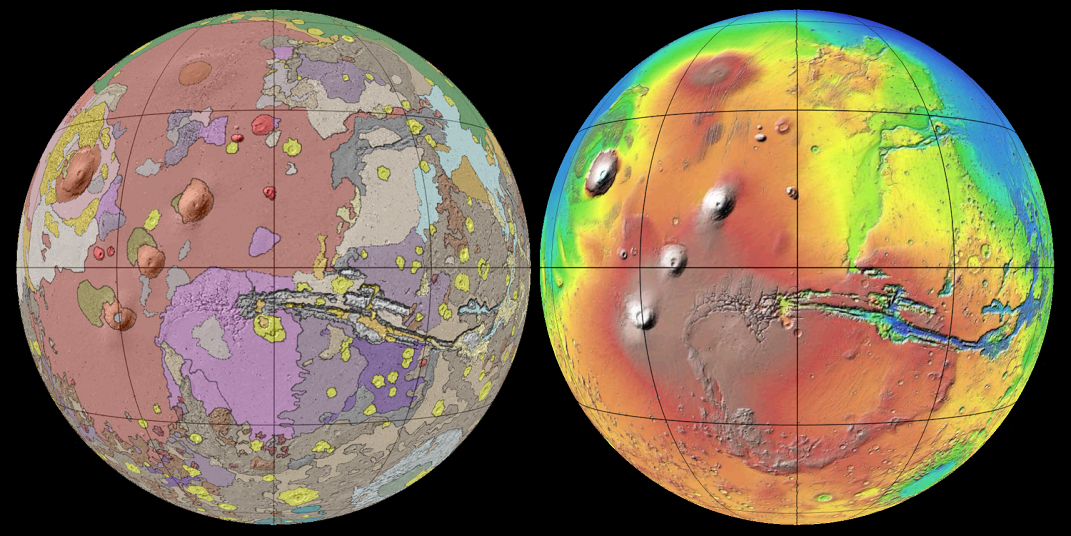New Mars Map Is the Best Ever Made (Image, Video)
The United States Geological Survey (USGS) has released the most thorough map of the Martian surface to date.
The new map of Mars, which was released Monday (July 14), was created using observations from four orbiting spacecraft over more than 16 years. It should significantly advance scientists' understanding of the Red Planet, researchers said.
"Spacecraft exploration of Mars over the past couple decades has greatly improved our understanding of what geologic materials, events, and processes shaped its surface," lead author Kenneth Tanaka, of the USGS, said in a statement. "The new geologic map brings this research together in a holistic context that helps to illuminate key relationships in space and time, providing information to generate and test new hypotheses."

The map relies on data collected by three NASA spacecraft — Mars Global Surveyor, Mars Odysseyand the Mars Reconnaissance Orbiter — as well as the European Space Agency's Mars Express probe. The map covers the entire surface of the planet, piecing together various data to reveal some new insights, researchers said.
For example, the map reveals that the surface of Mars is older than previously thought. Three times as much surface area formed during the Early Noachian Epoch — the first major geologic time period, which ranges from about 4.1 to 3.7 billion years ago — than had been previously mapped.
Characteristics of the Early Noachian include a high rate of meteorite impacts, widespread erosion, and the likely presence of water on the Martian surface, researchers said. (Planets in the solar system are thought to have formed approximately 4.5 billion years ago.)

The new map also confirms previous work suggesting that the Red Planet has continued to be geologically activeup to today. It provides additional evidence that climate changes on Mars have at times allowed for surface water and near-surface groundwater and ice to form temporarily.
Get the Space.com Newsletter
Breaking space news, the latest updates on rocket launches, skywatching events and more!
The new map will serve as an important reference for the origin, age, and historic change of geologic materials on the Red Planet, scientists said.
"Findings from the map will enable researchers to evaluate potential landing sites for future Mars missions that may contribute to further understanding of the planet's history," USGS acting director Suzette Kimball said in the same statement. "The new Mars global geologic map will provide geologic context for regional and local scientific investigations for many years to come."
You can download the new map for free at the USGS site here: http://pubs.usgs.gov/sim/3292/
Follow us @Spacedotcom, Facebook or Google+. Originally published on Space.com.
Join our Space Forums to keep talking space on the latest missions, night sky and more! And if you have a news tip, correction or comment, let us know at: community@space.com.

Nola Taylor Tillman is a contributing writer for Space.com. She loves all things space and astronomy-related, and enjoys the opportunity to learn more. She has a Bachelor’s degree in English and Astrophysics from Agnes Scott college and served as an intern at Sky & Telescope magazine. In her free time, she homeschools her four children. Follow her on Twitter at @NolaTRedd









